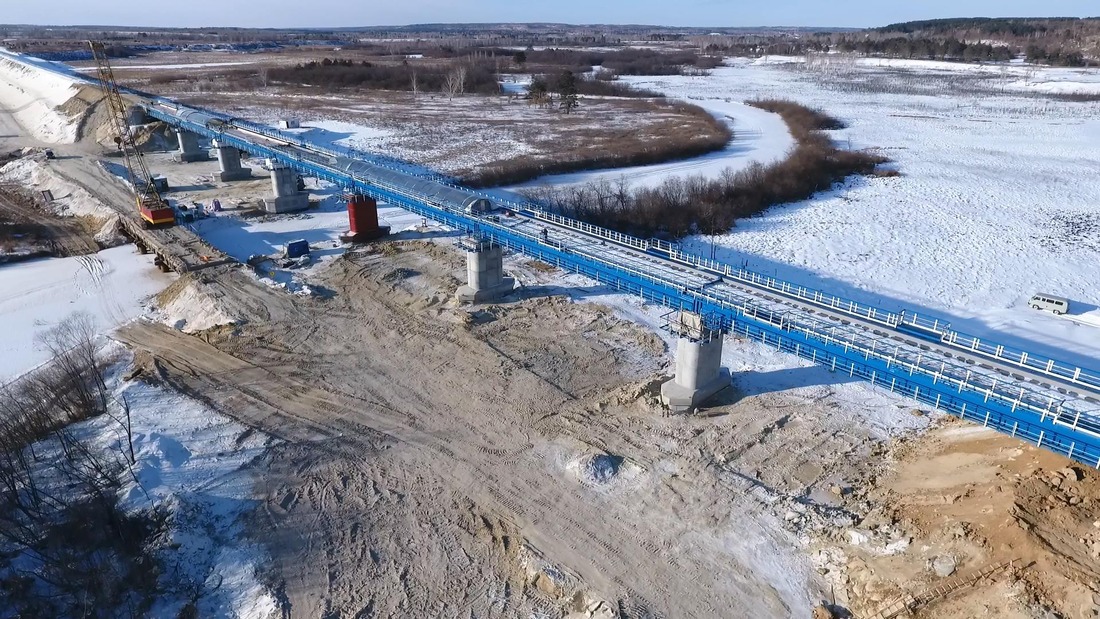Construction of Bridge over Bolshaya Pyora River, an Important Amur GPP Infrastructural Facility, Complete
The bridge will be 252 meters long. It will have eight supports and seven spans. Construction of this facility commenced in May 2017. Construction contractor has erected 5,300 tons of cast-in-place and precast reinforced concrete structures and 749 tons of steel structures.
Construction of the remaining components of the railway infrastructure will be completed in September 2018 according to the plan.
Background Information
Amur GPP will become Russia’s largest natural gas processing plant and one of the largest plants of this kind in the world. It will have a design capacity of 42 billion m3/yr of gas. The plant will also include the world’s largest facility for helium recovery with the capacity of up to 60 BCMPA of gas.
Amur GPP is an important link in the process chain of natural gas supplies to China in the Eastern route. The plant will receive the feed multi-component gas from Power of Siberia gas pipeline from the Yakutsk and Irkutsk gas production centres currently developed by Gazprom with its Eastern gas program.
Limited Liability Company Gazprom pererabotka Blagoveshchensk (which is included in the Gazprom Group) is the Investor and Owner of the Amur Gas Processing Plant Project.
Construction is managed by NIPIGAZ, a leading Russian centre for engineering, procurement, logistics and construction management (included in the SIBUR Group).
Peak time for construction will be in 2019 when over 25,000 workers will be mobilized to the site.


Enlarged photo (JPG, 476 KB)